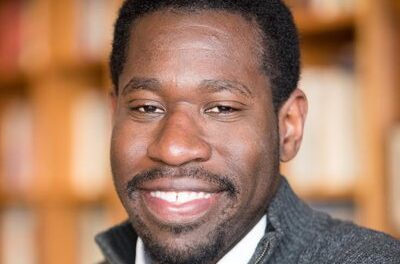By Ryan Michaels
The Birmingham Times
Marcia Fudge, secretary of the U.S. Department of Housing and Urban Development, on Wednesday announced that Housing Authority of the Birmingham District (HABD) will receive a $50 million grant to help revitalize the Smithfield community.
“The emotions I feel are indescribable,” said HABD CEO Dontrelle Young-Foster. “It is official. It is real, Birmingham. It is real, Smithfield. The first email I opened this morning was a congratulations letter from HUD, and now, we’re here today to hear that we are awarded for this great event.”
The Choice Neighborhoods Implementation Grant from the U.S. Department of Housing and Urban Development (HUD) is intended to help replace distressed public housing and improve its surrounding neighborhoods. The competitive grant is given to a handful of communities across the country each year.
Fudge said the $50 million grant is one way that affordable housing can be addressed.
“People talk about how there’s no affordable housing, and I admit that there is not. There is a crisis in this country, but your community has come together, put together one of the best grant proposals we have ever seen,” Fudge said.
The city will replace the Smithfield Court public housing development with new mixed-income housing and create more multifamily and single-family housing, as well as mixed use developments, throughout the Smithfield community, which includes the Smithfield neighborhood, as well as College Hills, East Thomas, Enon Ridge and Graymont.
Nearly 1,000 housing units could be built across the community as a result of the plan, including 350 units on 11 acres of former surplus property of A.H. Parker High School.
Birmingham Mayor Randall Woodfin said the city’s selection for a Choice Neighborhoods Implementation grant “further strengthens our shared commitment to neighborhood revitalization.
“The many partnerships developed to strengthen our neighborhoods and enhance opportunities for our residents created the climate to successfully secure this grant … as a city, we look forward to working closely with HUD, HABD and the many partners who will transform our neighborhoods through this opportunity.”
City Council President Wardine Alexander said the plan is not just about improving housing; “it’s about fostering holistic development, ensuring access to community resources, and building a strong foundation for economic growth and prosperity. This grant is a testament to our collective dedication to create a better future for all our residents.”
Councilor Darrell O’Quinn, who represents the district, said the residents helped in securing the grant. “I firmly believe that every person no matter their station has the capacity to have a positive impact on their community,” he said. “…To those among you who believed, who preserved in the face of doubt, and refused to let our past define our future, please know that you have our profound gratitude.”
Residents of Smithfield Court have waited “for decades” to see the community revitalized, Young-Foster said.
“Generations of families have called this community home, and one of the most remarkable things we have about the residents here in Smithfield Court is their unique sense of pride in their neighborhood,” she said.
Moving forward, Young-Foster said, wins like the Choice Neighborhoods grant will position HABD “to be a stronger driver of community and economic development.”
“As we redevelop public housing, develop new affordable housing in this neighborhood, we also look forward to working with our partners to expand wraparound services to residents, from education and health care to workforce development and commerce to this neighborhood,” Young-Foster said.
U.S. Rep. Terri Sewell said the grant is a “catalyst for change, change for the better.”
“This is a major step toward leveling the playing field and revitalizing these neighborhoods, and other neighborhoods, but we start right here in Smithfield…It means rebuilding Smithfield Court… Honoring our history but building and envisioning a better future—that’s what it’s about,” Sewell said.











